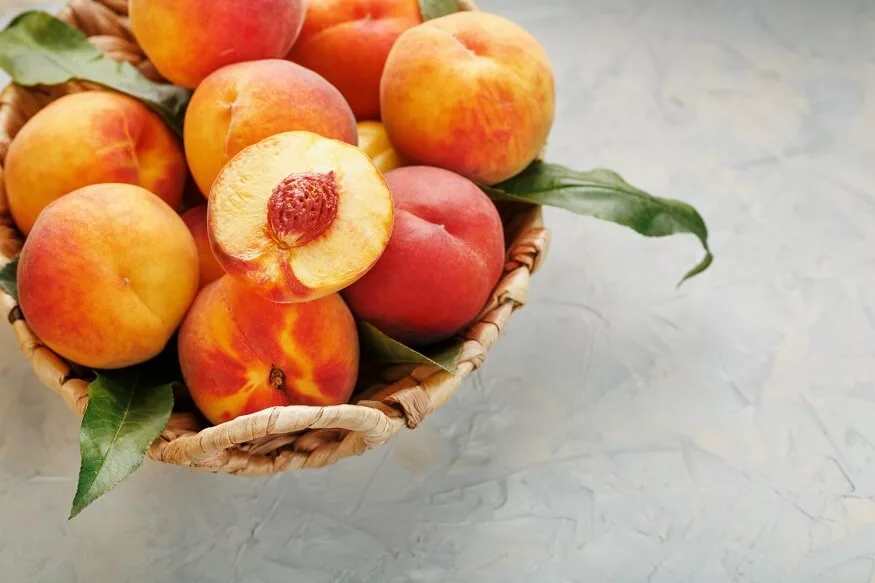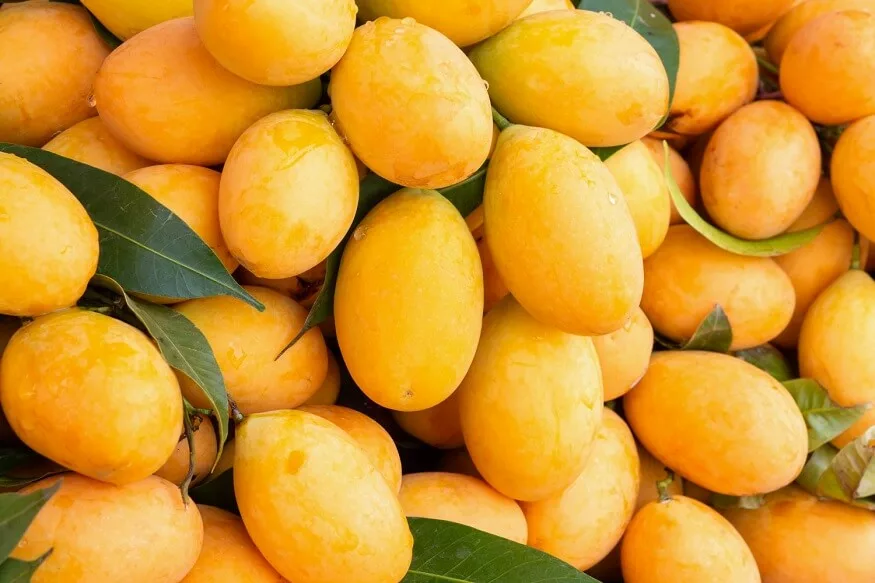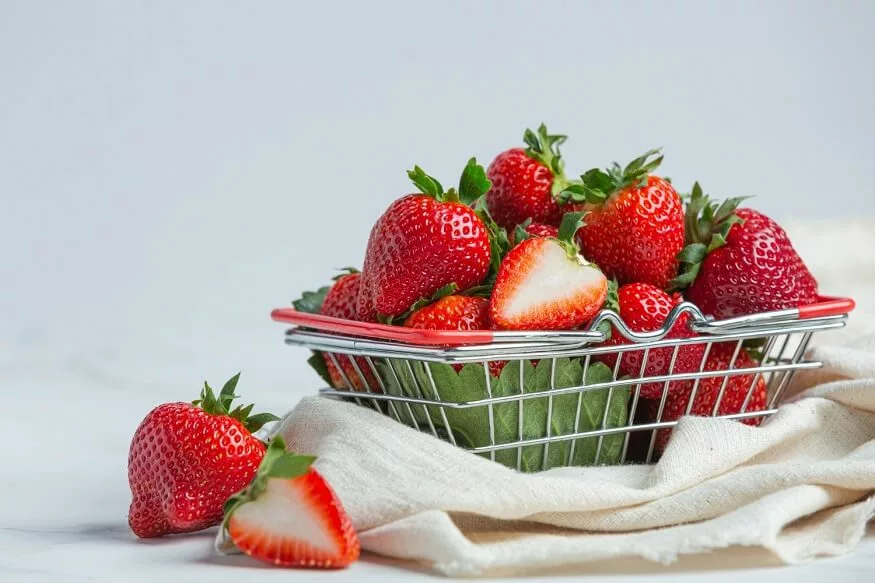Apricots and peaches are two widely known fruits, famous for their sweet taste and succulent nature. These fruits, both members of the Rosaceae family and scientifically categorised under the Prunus genus, are consumed globally in their fresh and dried forms, or as key ingredients in jams, desserts, and beverages.
Despite their common characteristics, apricots and peaches have distinctive attributes, flavours, and health benefits that set them apart.
In this blog, we will look at 5 key differences and do a full health comparison of Apricots vs. Peaches.
What are Apricots
Apricots, scientifically known as Prunus Armeniaca, are highly nutritious fruits from the Rosaceae plant family. The scientific name of this fruit is Prunus Armeniaca. Primarily cultivated in the Mediterranean and Central Asian regions, apricots are favoured for their sweet and slightly tangy flavour. They are small, orange-coloured fruits, with a slightly fuzzy exterior and soft, tangy pulp inside.
Apricots come in various forms such as dried, canned, or in jams and jellies. They are used in numerous savoury dishes, sweet desserts and beverages. Apricot kernels, the seed found inside the apricot’s pit, are also consumed in some cultures, although intake should be limited due to the presence of amygdalin, a potentially toxic compound.
What are Peaches
Peaches (Prunus persica) are succulent fruits native to the northwestern region of China. They are known for their juicy pulp and sweet taste. Peaches, belonging to the family Rosaceae, are a summertime staple and are considered a classic symbol of the American South.
Peach trees are deciduous, averaging between 4 and 10 metres in height when mature. These trees bear aromatic pink blossoms in spring, followed by the peach fruit. The peach fruit is distinctive with its fuzzy, velvety skin. The skin manifests in hues of yellow or creamy white, and the interior pulp ranges from yellow to white.
Peaches are distinguished further into two main types: freestone and clingstone. This differentiation is based on the relative ease with which the pit or ‘stone’ is removed from the flesh. In freestone peaches, the stone falls away from the fruit effortlessly, while in clingstone peaches, the flesh ‘clings’ to the stone.
Also read : Best Summer Drinks for Kids
Key Differences
1) Physical Appearance
- Apricots are smaller
- Have a diameter ranging from 1.5 to 2.5 inches
- Covered with velvety, orangish-yellow skin
- Peaches are larger
- Have a diameter of 2.5 to 3.5 inches,
- Covered with yellow to fuzzy pinkish-red skin that’s slightly thicker than that of apricots.
2) Taste and Texture
In terms of taste:
- Apricots are sweet with a tarty taste.
- The level of sweetness and tartness depends on how ripe the fruit is.
- Ripe apricots are sweeter, with a subtle tartness.
- Less ripe apricots have a more pronounced tartness.
Regarding the texture, apricots possess velvety skin and unique soft yet firm flesh when ripe. The flesh is neither too hard nor too mushy.
Apricots’ flavour can be enjoyed in a variety of culinary creations such as:
- Salads
- Sauces
- Desserts
- Smoothies
- Yoghurt and Cereals
- Baking
- Roasts
In terms of taste
Peaches have a sweeter, juicier and more aromatic flesh compared to apricots
Some peaches may have hints of honey, vanilla, or even a slight almond undertone, adding to their complex flavour.
In terms of texture
- When ripe, peaches are soft and juicy.
- The flesh of a ripe peach is tender, succulent, and almost buttery.
- The thin skin of peaches provides a slightly resistant crunch, making them enjoyable to bite into.
Their balanced, complex flavour and unique texture make them a popular choice in various cuisines, from fresh eating to incorporation in different dishes such as:
- Snacks
- Salads
- Desserts
- Salsas
- Chutneys
- Grilled dishes
- Beverages
3) Nutritional Composition
Regarding their nutritional components, both apricots and peaches are quite similar, but apricots have an edge in certain areas.
35 grams of fresh apricots contain
- 17 calories
- 9 grams of carbohydrates
- 5 grams of protein,
- 14 grams of fat
- 35 grams of sodium
- 7 grams of fibre
- 0 grams sugar
- 5 grams of Vitamin C
- 6 grams of Vitamin A
130 grams of fresh peaches contain
- 51 calories
- 4 grams of carbohydrates
- 2 grams of protein
- 3 grams of fat
- 0 grams of sodium
- 9 grams of fibre
- 9 grams of sugar
- Vitamin A: 20.8mcg
- Vitamin C: 8.6mg
- Vitamin E: 0.9mg
Also read : Which nutrients help our muscle growth?
4) Health Benefits
Apricots and peaches offer a myriad of health benefits.
Apricots are rich in
- Dietary fibre
- Antioxidants
- Vitamin C
- Vitamin A
- Beta-carotene
- Phenolic compounds
- Potassium
These help in
- Good vision
- Skin health
- Boost the immune system
- Maintaining blood pressure levels
- Lower the rate of cancer
- Hydration
Peaches are rich in
- Dietary fibre
- Antioxidants, including chlorogenic acid
- Vitamin C
- Water content
These help in:
- Improved heart health
- Boosting immunity
- Promoting healthy skin
- Preventing constipation
- Fighting inflammation
- Reduces risk of diabetes
5) Cultivation and Availability
Also read : Tips To Strengthen Your Body Immunity
Apricots and peaches require distinct growing conditions.
Apricots require a chilling period to become dormant and survive in winter, making them perfectly suited for temperate regions. In India, the production of apricots is primarily concentrated in regions with suitable climatic conditions.
- Ladakh is the leading apricot-producing region in India.
- Himachal Pradesh is another significant apricot-producing state.
- Jammu and Kashmir also contribute to apricot production, particularly in its colder regions.
Climatic Requirements:
Apricot trees have specific climatic requirements for successful cultivation.
- They need a chilling period to become dormant during winters.
- Apricot trees need 600 to 900 “cool hours” each year, between 0°C to 8°C
- Temperatures below 0°C are harmful to apricot trees
- The ideal summer temperature is 37 °C.
Peaches are versatile and can tolerate various climates, making them suitable for subtropical and nearly frost-free temperate zones.
Peach Cultivation in India:
Peaches are primarily grown in the northwestern hill states, including Sikkim, Manipur, Arunachal Pradesh, Nagaland, and Meghalaya.
Soil Requirements:
Peach plants can thrive in various soil types, including deep soil or sandy loam. The presence of a good amount of organic matter in the soil is beneficial for peach cultivation.
Temperature Range:
The ideal temperature range for peach cultivation is approximately 25°C to 30°C. Peach trees require minimum chilling hours to complete their growth cycle successfully.
At EuroSchool, we understand that balanced nutrition is critical in childhood years for proper growth and development. We include fruits in our meal plans and educational activities thus, contributing towards laying the foundation for a healthier future generation.











